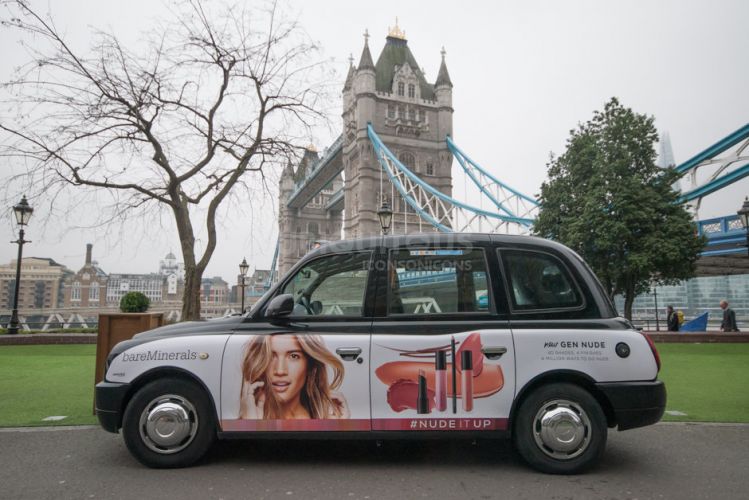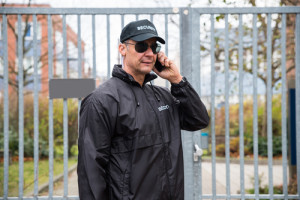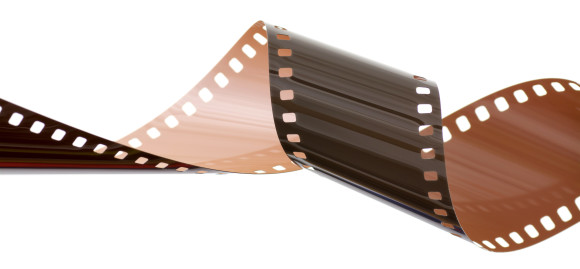A History of Independent Filmmaking
The history of independent film-making dates back more than a century, to when the industry was in its infancy. The Motion Pictures Patent Company was formed in 1908 and is commonly referred to as the Edison Trust. Thomas Edison owned the majority of the patents associated with film-making, and a select group of production houses were granted membership into the Edison Trust.
Other production companies attempted to work with materials not controlled by Edison, and a few years later, the Supreme Court passed down rulings that took away exclusive rights to the raw film from Edison. Though this allowed the independent film workers of the time to produce films with these materials again, the line between major studios and independent filmmakers had been drawn and continues to exist today, though the connotations associated with these productions has changed over the years.
Today, there are still major studios that produce and release the greatest percentage of films that come out each year. Local movie theaters show them, fast food restaurants promote the characters and themes in some instances, and there are similar marketing relationships that are unavailable to the independent filmmakers of the country.
Then, why would anyone want to be a part of the independent film industry? Freedom. The motion picture studios have a great deal of control regarding the content that is being produced and released under their name. Many producers, directors and others associated with film production feel their artistic style is stifled by this type of corporate pressure.
Aside from these companies worrying about public perception of their brand, they want films to have a certain rating by the Motion Picture Association of America. The MPAA has specific guidelines regarding what things may alter the rating of a movie. For instance, kisses exceeding a certain length of time may garner a “PG-13” rating for a movie that was otherwise “G” material. Continually considering these demands, both while filming and editing, can diminish the quality of the final product.
There are various means of funding independent films, and the vast majority of them allow the production team freedom in the creation process. If those working on the project have the talent and communication to bring it together, the results can be magnificent. Making films is an art, and those involved in the production are entitled to allow their creative juices to flow and to meld them with the artistic spirit of the other members so that the film is more spectacular than the sum of its parts.
The technology of today has enhanced many aspects of life for people in the modern world. In regards to those with a desire to make films, the software and hardware needed are more affordable than ever. These advancements are designed to be user-friendly and provide great quality.
Supporting the independent film industry is acknowledging how vital art is to a culture. Not only are there fantastic film festivals that can be attended to see these creations, many are available through online downloads and related means.
For artists and the general public alike, the independent film industry is a part of modern culture that deserves celebration and attention. The artistry across genres is emotionally engaging experience.
The Role of The Taxi In Film
Taxis have played a significant role in films throughout the ages. As a matter of fact, some of the most iconic movies of all time have used taxis. While the film Taxi Driver is an obvious example of this, a number of other films have used taxis effectively.
Read on if you would like to learn more about the roles taxis have played in films.
Taxis and Exposition

Taxis are often used for exposition scenes. When a character is sitting in the back of a taxi, they can provide essential information to the audience.
Some movies have the taxi driver ask their passenger questions. For example, the driver might ask them about where they are going, or what they do for a living. The answers that they give the driver can be very informative.
Scriptwriters need to find interesting ways to convey important information. A lot of writers have used taxis to get this information out there.
Trapped in A Taxi
When two people climb in a taxi, they are stuck together until the taxi reaches its destination. If the two people are already on bad terms, this can be fairly intense.
Some movies use a taxi to bring tensions to their boiling point. For example, a couple that has been arguing for a while may wind up in a blowout argument after stepping into a taxi.
When people are out on their own, it’s easy for them to defuse an argument. When people are sitting in the back of a taxi, it’s a lot harder for them to avoid talking about thing.
Taxis and Chase Scenes
While taxis are often used in dramas, they are also used in action films. In many cases, someone has to take over a taxi in order to pursue a criminal. These scenes can be quite intense, but they can also be entertaining. In some cases, the cab driver doesn’t know what to make of the situation.
In other films, someone has to steal a taxi in order to get to their destination. This can also lead to entertainment scenes. It’s hard for the audience not to feel sympathy for the cab driver in this situation.
The Imagery of Taxis
Most people can instantly recognize a yellow taxi cab, even if they have never seen cabs in real life. This is because taxis have appeared in so many films. This is also true of London’s famous black taxi cabs.
Showing someone hailing a taxi is a great way to show that the person is in a city. Taxis aren’t really associated with suburbs and small towns. In the films, a yellow taxi is a clear indicator that the movie is taking place in a city.
If you’re a film buff, you should pay close attention to the role of the taxi in films. The next time you watch one of your favorite movies, you should pay close attention to taxi cabs. You might be surprised when you see how frequently taxis are used. Taxis have become a film staple, and they’ll continue to appear in movies in the future.
The Evolution of Film Sound Tracks
There is no denying that a good film score can make any film a much better movie. This is true of all films. While musicals are the obvious beneficiaries of great soundtracks, any movie with a memorable soundtrack to set the mood makes a good film amazing.
 While Singin’ in the Rain would not have made such a powerful impact on the mass consciousness without its iconic film score, neither could King Kong, Psycho or the Star Wars series. This extends beyond American cinema: Seven Samurai’s score is iconic even in the west, and the British Hammer Horror series loses a lot of teeth without its shocking soundtracks.
While Singin’ in the Rain would not have made such a powerful impact on the mass consciousness without its iconic film score, neither could King Kong, Psycho or the Star Wars series. This extends beyond American cinema: Seven Samurai’s score is iconic even in the west, and the British Hammer Horror series loses a lot of teeth without its shocking soundtracks.
However, things were not always so. In the early days of cinema, as most people know simply from the concept of “silent films,” there used to be no sound in movies at all. Despite this, while the earliest films do not have soundtracks, many early movie houses hired organists or even orchestras to play music during the showing of the early silent films.
This was not due to any matters of artistic ideals, but rather because early projectors made incredibly irritating noises and since sound absorbent walls did not yet exist between the audience and the projector, something was sought to cover up the grinding of the projector. Most movie houses chose to use music.
It wasn’t long before movie goers began to appreciate the music as a supplement to the moving pictures on the screen, In 1914, the Oz Film Manufacturing Company sent full length scores by Louis F. Gottschalk to go along with their films, and thus the age of the film soundtrack had begun.
While this was only a common practice for big budget movies of the era (and even then was not a standard practice, as many movie houses preferred to have their in-house musicians play traditional pieces by famous composers), it did mark the first intertwining of the aspects of moving images on the screen and moving music in the theater.
In the 1920’s, German cinema, once a major powerhouse in the medium of film the world over, provided a number of scores to go along with movies, such as Fritz Lang’s Die Nibelungen and Metropolis, as well as F. W. Murnau’s iconic expressionist horror films Faust and Nosferatu.
When film technology finally began to include sound, it was some years before soundtracks came into this medium. While Tod Browning’s 1931 Dracula is an early “talkie”, it includes no soundtrack despite the fact that its sound recordings defined how vampires talk in the modern imagination.
Synchronizing movies with music was a landmark event in film history, first taking place in another legendary creature feature, David O. Selznick’s King Kong in 1933. The soundtrack of King Kong was composed by Max Steiner and features many scenes of music synchronized with the film’s action, such as when the chieftain of the people of Skull Island approaches the visitors to the island, with each footfall being back by a background chord.
During the 1940s, there was less development in the medium of film scores, but in the 1950s, there was the beginning of the modern film score, shifting away from purely orchestral sounds and adapting to other types of sounds, ranging from jazz influences to the style of music beloved by Broadway that finally hit the silver screen in that era. The horror film soundtrack, with its emphasis on uncomfortable tension and sudden, shocking surges of music, began in this era as well, with Alfred Hitchcock’s Vertigo and Psycho beginning the age of the horror film soundtrack. Since then, movie scores have gone on to become an essential part of nearly every film on the market today.
The Bodyguard – Elements That Made It a Classic
“The Bodyguard,” released in 1992, was one of the most popular films of its time, and in 1992, it made more money than 99 percent of the movies that year. In the 21st century, the film can be found on DVD, VHS and online.
 The movie involves a former Secret Service agent who becomes a bodyguard and is hired to protect a singer from a suspected stalker. It takes time for the singer to realize the seriousness of the situation, but events in the movie lead her to realize she needs a bodyguard.
The movie involves a former Secret Service agent who becomes a bodyguard and is hired to protect a singer from a suspected stalker. It takes time for the singer to realize the seriousness of the situation, but events in the movie lead her to realize she needs a bodyguard.
Due to the quality and the way the move resonated with viewers, “The Bodyguard” is also considered to be a classic. What are the reasons “The Bodyguard,” featuring Kevin Costner, as the body guard, and the late Whitney Houston, as the singer, is a classic?
The Film Was Whitney Houston’s Acting Debut
Whitney Houston, one of the most famous singers and actresses of the 20th century, and who died in 2012 at the age of 48, was known by millions and millions of people across the globe in 1992. Her performance in “The Bodyguard” marks her first acting project and is a landmark for Whitney Houston fans who like to follow the timeline of her career.
The Movie Showcases an Interracial Relationship
Although the security guard Houston falls in love with, Frank Farmer, played by Kevin Costner, begins the relationship purely professional. In fact, he’s not too thrilled about taking the job because he considers the singer Rachel Marron, played by Whitney Houston, to be a spoiled diva at first. Eventually, the two grow fond enough of his other to share a romantic kiss at the end of the movie. The passionate kiss between a black woman and a white man is unusual for the movies and is one of the scenes that makes “The Bodyguard” a classic. Even in the 21st century, a kiss between a black woman and a white man is an unusual thing to see in the movies.
Whitney Houston is in a Leading Role
It is unusual to see African-American women in leading roles over their white counterparts, especially in 1992. However, in “The Bodyguard” Whitney Houston takes center stage. She is the focus of the film whereas Keven Costner’s character takes a lesser role.
Two of the Songs from The Bodyguard are Classic Songs
Whitney Houston sang the songs for the film. Because of her strong voice that was beloved by millions and millions of people across the globe, the songs were sure to become popular. For examples, the songs “Run to You” and “I Have Nothing” were two of the songs from the movie that were critically acclaimed. The songs were heard over and over on the radio, and they were nominated for Oscars and Grammys. Furthermore, the soundtrack for “The Bodyguard,” which included other tops songs such as “I Will Always Love You,” became the best-selling soundtrack ever.
“The Bodyguard” Joins the List of Love Story Movies
In modern culture, there are a number of movies that are added to the list of love stories that are beloved by millions. “The Bodyguard” is constantly referred to as a movie that people see over and over. It holds a strong spot on the romantic movie list.
Whitney Houston and Kevin Costner never appeared in a film together again. Their union was a unique combination that made “The Bodyguard” one of the most beloved movies of 1992 and of all time. It is a classic movie that holds a permanent spot on the list of romantic movies.
Although not an independent film, indie film-makers can take the above cues from this classic and incorporate the elements into their own productions to assure bigger box offices.
What to Look for When You Hire a Wedding Videographer
If you are getting married then you will want to preserve the memories of your wedding for the rest of your life, and while photographs are a good way of doing that, video is even better. A good videographer will capture living memories of your special day, so you can watch the ceremony and the celebrations whenever you feel like it.
Recording video is a skill, though, and one that is harder than it looks. Sadly, there are a lot of wedding videographers out there who are ‘people with good cameras’ who think that is all that it takes to do a good job. Anything relating to weddings tends to be quite expensive, and those people are trying to cash in on that expense. As someone planning a wedding, you want to find the best videographer you can afford – one that will get the best footage possible first try, because you’re not going to want to repeat your vows just to “get another shot”!
Finding a Good Wedding Videographer
A good wedding videographer should have a large portfolio of weddings that they have worked on. They should be happy to show you previous weddings that they have worked on, and – most importantly, you should like that footage. There is more than one style to filming – it could be that you don’t like the soft focus, the camera movement, the way they use zoom, or the angles they use. It could be that there’s something specific you love about the way that a certain video looks. Don’t choose a videographer based on price or convenience then ask them to change the work they do – find one that you like the work of and then try to agree on the details.
Another thing to consider is how well you get on with the videographer in question. You don’t have to be best friends with them, but it does help if they are personable. Ideally, they will be busy and out of the way most of the time. With that said, you will have to interact with them and so will your guests, so make sure that you won’t find their presence irritating.
Consider getting in touch with some of the couples that have worked with the videographer before and asking for references. Ask them whether they were happy with the footage they were given and whether it was supplied in a timely fashion. In addition, ask how the videographer conducted themselves at the wedding. It’s unlikely that you will hear any horror stories about them getting drunk and insulting a bridesmaid, but it’s a good idea to ask just in case!
Make sure that you discuss the package that you are buying clearly, in advance. Are you getting a fully edited DVD? Will it cover the wedding and the reception? Will there be footage or shoots separate from the main service itself? If you know what to expect in advance it will make the day less stressful because you will have one less thing to think about, and it will help to avoid any frustration or disappointment after the event.
Any good wedding videographer will be happy to explain to you exactly what they are offering, and will accommodate any requests, within reason, to “pay special attention to the uncles from Australia” or “get a few extra shots of my niece” that might make the video even more special for you. It’s your day, and they will want to help record exactly the memories that are most important for you.



